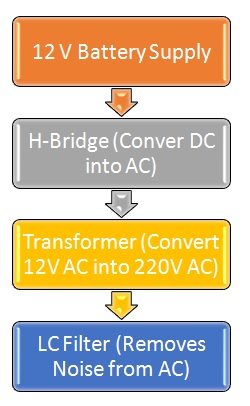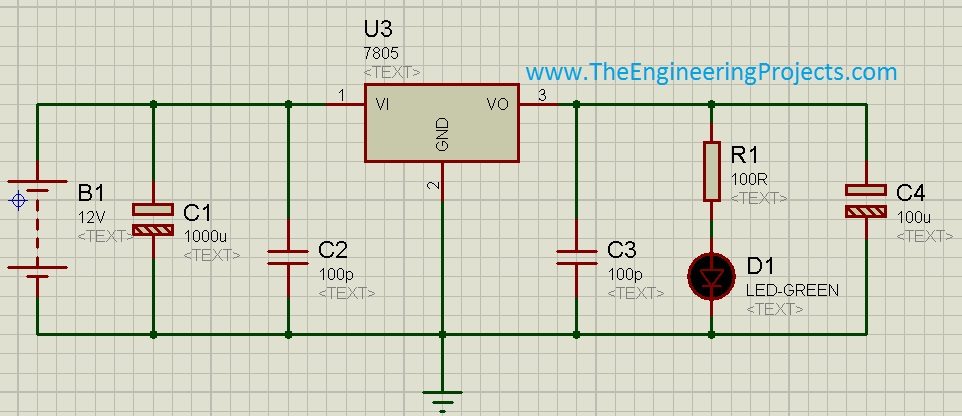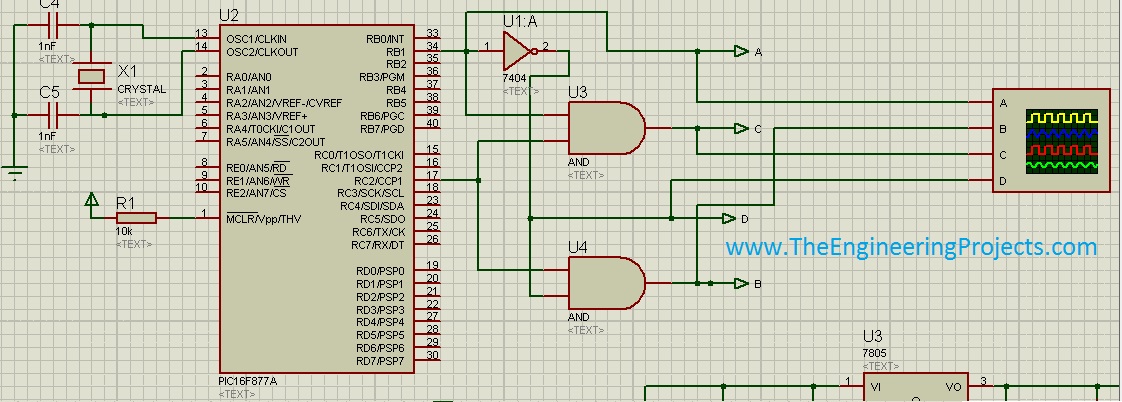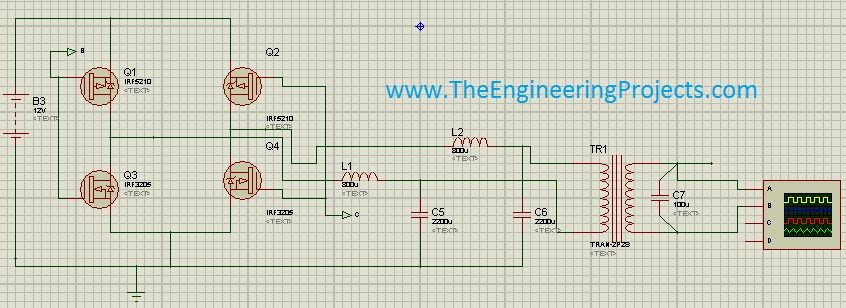
Let's start with the basics of Pure Sine Wave Inverter Simulation, first of all, I would recommend you to read the Pure Sine Wave Inverter Design as I have shared all the basics in it. AC voltage is actually a fluctuating voltage and is in the form of sine wave. If you got a pure sine wave then it has no losses in it, but if your design has losses then you never got able to get a pure sine wave. Instead you get a modified sine wave. Efficiency of pure sine wave is approximately 100% and you decrease the efficiency your sine wave also start to distract. So, in short pure sine wave contains no losses and is highly desirable. So, let's get started with Pure Sine Wave Inverter Simulation in Proteus ISIS:
Note:- The buying package contains complete working Proteus Simulation, along with Programming code and hex file for PIC16F877A.
- You can buy it from shop by clicking on below button.
Pure Sine Wave Inverter Simulation - Logical Model
- Now, let's get started with the pure sine wave inverter simulation in Proteus. In this project I have used 12V DC battery and then converted it into 220V AC voltage and the AC we got was pure sine wave.
- In order to do so you have to follow a proper pattern as shown in below figure:

- Its quite obvious in the above figure, you are getting 12V supply from a battery so what you need to do is to pass it through a H-bridge. H bridge converter the 12V DC into 12V AC.
- This is the most important block for pure sine wave as it does the real working. Depending on the switching of H- bridge either you get a pure sine wave or a modified sine wave.
- Switching of H-bridge is done by the Microcontroller, here I have used PIC16F877A, which is normally used.
- Now, after H-bridge you have 12V AC voltage, now there's a need to convert these 12V into 220V so that you could use it and for that I have used Transformer. Its a step up transformer which converts 12V AC into 220V AC.
- Finally I have used a small LC circuit which acts as a filter and removes the ripples or noise if there's any. Noise normally comes from transformer. So, its a good precaution to use a filter rite after Transformer.
Pure Sine Wave Inverter Simulation in Proteus
- Following these steps mentioned above, I have designed the Pure Sine Wave Inverter Simulation in Proteus.
- First of all, I have designed a power supply to convert 12V into 5V so that I could feed it to microcontroller. The circuit is shown below:

- As you can see in the above figure, I have used 12V supply and then converted it into 5V using 7805, which is a voltage regulator. The output of 7805 is then fed to PIC Microcontroller which is 5V.
- Next block shown in below figure is the PIC itself and its basic circuit along with AND gates. AND gates are used to convert the signal into positive and negative because normally microcontrollers contain single CCP pin so that's why I have used one pin here and converted this single signal into positive and negative waveform of sine wave. Figure is shown below:

- So here, we are generating the pure sine wave via PWM, the carrier frequency used in this code is 20kHz. Let's have a look at this scope.

- Next comes is the main part which is the H bridge design, where we are inputting these signals coming from the PIC Microcontroller, to switch them accordingly. and after this H-bridge is the Transformer which is converting the 12V into 220V AC output. The image is shown below:

- Now let's have a look on this second scope where we should get the Pure Sine Wave. I have inputted both the terminals of AC into oscilloscope so you will get sine wave on one end and inverted sine wave on the other end, both will be displayed in the oscilloscope. The image is shown below:

- Here we got the pure sine wave at the output. Now I am not sharing the code here as I mentioned above we have designed it after a lot of efforts so its not free but we have placed a small amount on it of $50 so that you can buy it. You can get it from the shop by clicking on the button above.
- The buying package contains complete working Proteus Simulation along with Programming Code and hex file.



